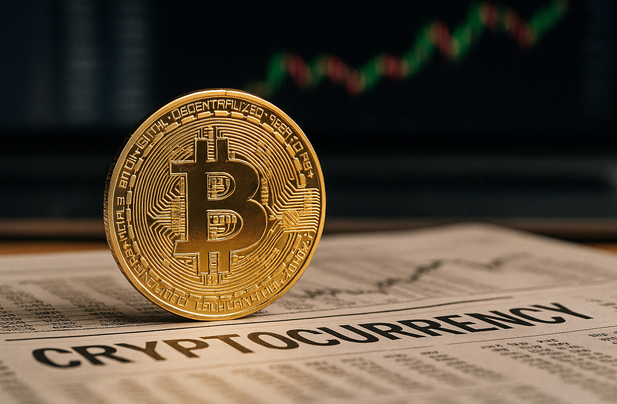TLDR
- Bitcoin derivatives show caution despite strong $5B ETF inflows this month.
- Bitcoin futures premium remains low, indicating uncertainty in price direction.
- 25% delta skew signals growing concern over downside risk in Bitcoin options.
- Stablecoin behavior suggests hesitance, as traders are wary amid price volatility.
Bitcoin’s price movement has recently faced challenges, even with strong inflows into Bitcoin Exchange-Traded Funds (ETFs). Despite impressive institutional demand, derivative markets are sending signals of caution. Bitcoin’s price, which reached an all-time high earlier in the week, struggled to regain momentum. The market uncertainty is compounded by broader economic concerns, such as fears surrounding the US-China trade war and growing inflation risks, which have influenced both Bitcoin and traditional financial markets.
Bitcoin ETF Inflows Show Institutional Confidence
Bitcoin’s spot ETFs have seen a substantial increase in investment this month, with over $5 billion in net inflows. This surge indicates a strong demand from institutional investors, suggesting that Bitcoin still holds appeal for large players in the market. Investors seem to view Bitcoin as a store of value amid economic uncertainty.
However, despite the positive inflow data, Bitcoin’s derivatives market presents a more cautious outlook. Futures and options markets, which are often used to speculate on Bitcoin’s price direction, have shown little change in recent days.
The 60-day futures annualized premium remains at a modest 7%, far below the 10% mark seen during periods of strong optimism. This suggests that traders remain uncertain about Bitcoin’s immediate price direction, even as spot ETFs continue to attract investment.
Bitcoin Derivatives Signal Market Caution
The data from Bitcoin derivatives markets shows that traders are not fully convinced of the price rally’s sustainability. The 25% delta skew, a measure of downside risk, has climbed to 8%, indicating that traders are hedging against potential price drops. This shift suggests that there is still some hesitance in the market, despite the positive ETF flows.
The premium on monthly Bitcoin futures has stayed relatively flat over the past week, reflecting a lack of fresh bullish sentiment. In the past, when traders were more confident, this premium would often rise above 10%. The limited movement in this key indicator points to the fact that many traders are not fully embracing Bitcoin’s recent gains, instead remaining cautious and waiting for more stability in the market.
Broader Economic Concerns Weigh on Bitcoin Sentiment
Bitcoin’s price trajectory is closely tied to broader economic and geopolitical factors. The surge in gold prices, hitting a record high of nearly $4,050, signals that investors are seeking safe-haven assets amid ongoing fiscal challenges in the United States. The US-China trade tensions, in particular, have sparked concerns that worsening relations could impact corporate earnings, especially in tech sectors like artificial intelligence.
Bitcoin’s correlation with traditional financial markets, especially the S&P 500, remains significant. Currently, Bitcoin’s relationship with the S&P 500 stands at 73%, which suggests that Bitcoin’s price is being influenced by the same risk factors affecting global equities. As the stock market faces increased uncertainty, traders may be reluctant to take on additional risk, keeping Bitcoin’s price movements restrained.
Stablecoin Behavior Reflects Investor Caution
Stablecoins, such as Tether (USDT), have also provided insight into Bitcoin traders’ sentiment. When traders are nervous about the market, stablecoins tend to trade at a slight discount to the US dollar. This occurred earlier this week, as Bitcoin’s price dipped below $120,000. However, after the price drop, the discount dissipated, indicating that traders were less inclined to exit the market entirely.
The movement of stablecoins in relation to Bitcoin provides valuable information about market confidence. When traders seek liquidity and exit positions, it often results in a discount for stablecoins. The return to parity between Tether and the US dollar suggests that some traders are holding steady, refraining from large exits despite Bitcoin’s price fluctuations.
Bitcoin’s derivatives market remains cautious, even as ETFs experience strong inflows. This divergence reflects the ongoing uncertainty surrounding Bitcoin’s price, influenced by macroeconomic factors and broader market sentiment. While institutional demand remains strong, traders are wary of potential downside risks, keeping Bitcoin’s price under pressure despite a week of positive ETF activity.






